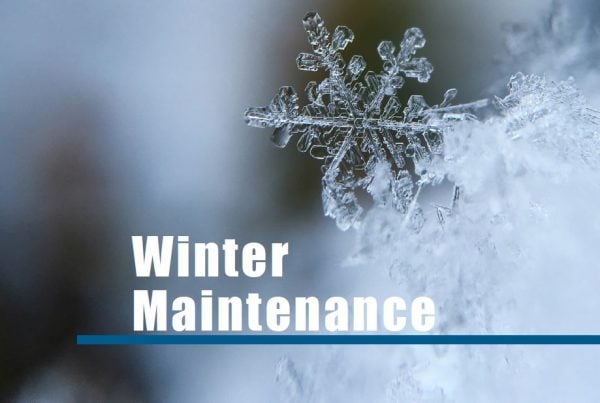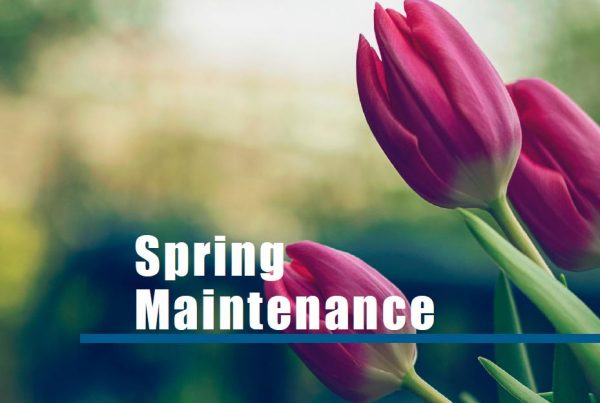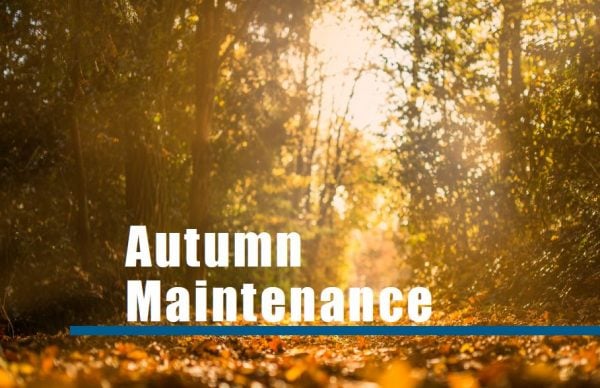Welcome to the Ultimate Guide on Rental Property Maintenance.
This Ultimate Guide gives you a season-by-season look at property maintenance that will make your rental a profitable investment.
This guide is designed for landlords, property managers, and investors who want to stay on top of their property maintenance. The guide is broken down into 4 sections, one for each season, and covers what maintenance you should complete before the next season’s elements hit.
You will also find a Rental Property Safety Checklist that will help you identify key areas to asses at your rental properties, to keep your properties safe and your renters happy. Remember, providing safe and healthy living conditions for your renters is your legal responsibility as a property manager and owner.
Flip through the eBook on this page, download the PDF to reference later, or keep reading the article to discover the most inclusive list of rental property maintenance for each season.
Download the Ultimate Guide: Seasonal Rental Property Maintenance
Seasonal Rental Property Maintenance
Owning rental property means keeping up on routine maintenance so your investment continues to pay off each year. Landlords who reinvest a portion of their rental income into performing routine maintenance will keep their properties in great condition and their tenants happy.
This Ultimate Guide gives you a season-by-season look at the maintenance tasks that will keep your property in great shape.
Starting with spring, you will see what tasks are important to manage at the beginning of the year to minimize moisture damage. In summer, you learn about getting the outdoor areas ready for warm weather activities and summer pest control. Fall is a good time to animal proof your house to make sure critters don’t move indoors as it gets colder. And winter, you’ll learn tips to winterize your property before the freezing weather creeps in. Set reminders in your calendar for a maintenance day each season to keep your property in great shape.
You will also find helpful tasks to pass along to your renters so they too can maintain the beautiful home they will want to keep living in. Attending to routine maintenance and preparing a property for seasonal weather will prolong the performance of your investment.
Spring Maintenance
Spring Tasks
As the sun starts peeking through the clouds, it is likely your tenants will start to head outside to enjoy the fresh air once again. Spring property maintenance should be on your radar.
Clear the Gutters:
It’s important to clean gutters before and after the wet seasons. Winter winds can bring with it debris that become trapped in gutters causing leaks. This can result in expensive damage to roofs and home interiors if a leak occurs. If your downspout gooseneck is clogged, simply use a house to force out any organic materials. Should the debris be too difficult to remove, consider calling an expert.
Landscape Management:
Spring is known for its beautiful blooms; increase your curb appeal and your tenants’ contentment by sprucing up your landscape. It’s time for annual landscaping to ensure that your property looks its best.
It’s also imperative to ensure that any limbs or other debris that may have been the result of winter storms are cleared from the landscape to avoid accidents. Maintain shrubs and branch so they will not conduct moisture onto your roofing and siding. This will also discourage critters from finding an easy path to nest in the attic. Spring landscaping can include lawn aeration, overseeding, fertilization, and pruning of shrubs or trees.
This is the ideal time to start thinking about landscape management; mowing or weeding grass now will provide a headstart on sudden growth caused by warm weather. Planting annuals right now is a low maintenance way to give a dash of color to a yard and increase your property’s curb appeal. Early spring is a perfect time for pruning flowering trees and fruit trees since they will start budding soon.
Spring-Clean the Exteriors:
Check for areas that could use a good power washing and blast away any residual winter grime. Complete these tasks before hot summer months can mean that excessive water use could be irresponsible. In the process, be sure to check for any chipped or cracking paint. Exposed siding can be subject to rot, so be certain to protect it with a fresh coat of paint if needed.
Minimize Moisture:
Remind tenants to look for any mold. Winter dampness can lead to mold buildup on the
surface of walls within the unit. Small puddles should be managed as quickly as possible and it is wise to install or hire a dehumidifier to ensure that no mildew is allowed the chance to develop. If you notice that a leak has caused mold to penetrate the structure of the unit, hire a professional to address the situation. Make certain that you are fully aware of your legal responsibilities with regard to mold in a rental home. Check state or local jurisdictions to learn more.
Have the HVAC Inspected:
Be certain that your property’s heating system is inspected, serviced and cleaned at least once a year. Heating systems worked quite hard, in winter; maintenance can postpone an unfortunate and rather expensive replacement. A simple spring checklist can be the key to protecting your investment and ensuring happy tenants.
Summer Maintenance
Summer Tasks
With the first official day of summer only a couple weeks away, actively preparing your rentals for the hot weather months with summer maintenance will keep your property functioning optimally and your tenants happy. Now is the time to spruce up your common areas and perform routine maintenance and inspections that took a back burner to harsh weather and urgent requests through the colder months.
Ready Outdoor Amenities:
If you property offers outdoor amenities like pools, fire pits or grills, make sure everything is clean and working well. Summertime calls for entertaining in outdoor spaces, and providing your tenants with functioning features is part of the reason they chose to rent from you in the first place – don’t let them down!
Get the pool in prime condition for summertime splashes. If you don’t have a lifeguard on duty, check to make sure your posted safety signs are visible & aren’t faded by winter weather or the sun. Check that locks & gates are in good condition. If you want your residents to use the community space you provide, make sure the propane tank is full & keep an extra on hand, in case your residents need to make a quick switch. While you’re in the general vicinity of the chimney, be certain to inspect it (and your fireplace) before your tenants use it for warmth against winter’s cold.
Check Sprinkler Systems:
When the temperatures start to rise, service the irrigation system to save on water usage, prevent landscape damage & reduce standing water. Every system needs a good annual tune-up and the first heat wave of summer is a great time to do it, ensuring no plants will be without water when they need it most. Make sure your irrigation system is programmed to follow any water rationing regulations. Program sprinklers to optimal summer use settings to keep the landscape looking fresh.
Seasonal Pest Control:
Bugs love warm weather, including ants, mosquitoes, wasps and spiders. If you choose to use pesticides on your property to prevent insects and pests from invading the grounds, treating your property seasonally will help stop pest before they become a big problem. Don’t forget to check the nooks and crannies of the the exterior of your property for wasp or hornet nests that might pop up this time of year. And advise your tenants on the best way to handle any ants that seek refuge inside your tenants’ homes.
Summer Fire Wise:
Prep your property for high heat and remove fire dangers. Trim bushes and trees, take care to remove dead plants. Ensure any grills are properly ventilated and positioned away from buildings. Double check your local laws about fire extinguisher requirements for landlords.
To further protect against summer fires, tests smoke detectors and carbon monoxide alarms. Although your tenants should monitor their own detectors, maintaining these property features can easily get overlooked by passive tenants. Every detector should have a test button, and batteries should get changed biannually.
Check in With Tenants:
Whether you send out a seasonal tenant newsletter, or send a friendly email, check in with your tenants to stay connected and remind them to communicate questions or concerns they have about the rental property.
Take advantage of asking for renewals while spirits are high. Host a community event, like a BBQ or pool party & offer renewal incentives. Remind your tenants about how much fun it is to live in your property; they will be more likely to stay.
Autumn Maintenance
Autumn Tasks
As the temperatures cool, take some time to give your property some attention and visit those maintenance issues that took a back burner during the busy summer months. Fall maintenance, including a seasonal inspection and a little preventative maintenance, you can help keep your rental property in top condition. You can also make expensive items like your roof or furnace last much longer, which means more money in your pocket.
Exterior Checks:
Check for inexpensive maintenance issues like areas that need caulking, gutters that need debris removed, or vegetation that needs trimming to prevent future damage. Check the roof for loose or missing shingles. Fixing small issues before they cause expensive problems is key.
Inspect for Fall Safety:
Autumn brings with it cold weather and, often rain. Inspect your supports and railings for decks, patios and entry ways. Be sure that the handrails can support someone who may slip on a wet surface.
Animal Proofing:
Cold weather brings critters seeking refuge in the warmth of an accessible basement or attic. To prevent an infestation, caulk small holes and cover large holes with hardware cloth.
The Humane Society recommends the following tips for animal proofing your property: caulk for small holes, staple or screw hardware cloth over larger holes, or make permanent repairs. Bug screen (1/4 inch hardware cloth) will not hold up to stronger animals, such as raccoons, so 16 gauge 1 x 1 inch steel mesh is recommended for raccoons. For squirrels, solid aluminum flashing is the exclusion material of choice.
Prep Your Attic:
Check your attic’s insulation to prevent ice damming on your roof, which can lead to damage and expensive repairs. Unwelcome critters can destroy insulation which will need to get repaired before winter weather makes the problem an even bigger repair.
Roof Inspection:
Ice, rain, snow and wind combined with rapidly changing temperatures and humidity wreak havoc on roofs. Check for missing or loose shingles. A slightly damaged roof can lead to water exposure which cause deterioration to insulation, wood and drywall, making electrical, plumbing and HVAC systems vulnerable. It’s better to proactively deal with repairs in the fall, than discover a leaky roof during a winter storm. Due to the importance of your roof, have a licensed, certified roofing professional check the condition of your roof once a year.
Caulking:
Caulking and sealing openings is one of the least expensive maintenance jobs. Openings in the structure can cause water to get in and freeze, resulting in cracks and mold build up.
Gutters:
Once leaves start to fall, clean out the gutters and downspouts around the property. Clogged gutters can create ice dams in freezing temperatures that can cause gutters to break entirely and a cleared gutter will direct water away from the property and prevent water damage to the foundation or structure. Preventative maintenance before autumn is crucial and protects your investment from storms.
Winter Maintenance
 Winter Tasks
Winter Tasks
Winter chill is in the air, indicating that it’s time to take care of the all-important winter maintenance tasks before storms hit full-force. Preventative winter maintenance includes protecting pipes from bursting, fixtures from crumbling, plants from dying, and your tenants from slips and falls. Here’s a look at the most important winter maintenance tasks to prevent cold weather damage this season.
Winterize Pipes:
Any un-insulated pipes must be wrapped to ensure they will not freeze or burst when the temperature drops. Remind your tenants to disconnect garden hoses and insulate outdoor spigots. Tell your tenants to take special precautions if the temperature drops below 20 degrees. Instruct them to keep one or two faucets running slowly at all times to prevent the line from freezing. Tell tenants to keep the cabinet under the kitchen sink open so warm air can flow around the pipes.
Flush the Water Heater:
Experts advise that you flush the water heater at least every two years to control mineral buildups that can cause damage or prevent efficiency. An old water heater will need some extra TLC; plan to schedule either a repair or a replacement, if necessary.
Prune Trees & Clear Debris:
Now is the time to prune your vegetation to protect it from harsh weather, and to ensure safety for your tenants. Heavy snow and ice can weigh on unstable branches leading to dangerous breakages that could harm residents or obstruct pathways. Check your property for any trees or shrubs in need of a trum before the cold hits full-force, and ensure that walkways are clear of slippery mulching leaves.
Prevent damage from water pooling against your roof or siding by cleaning the gutters once more. Autumn winds brought leaves and debris with it that need to be addressed.
Weather-Proof Structures:
Don’t forget to seal windows and doors to insulate against the winter chill. This keeps heating costs down for your tenants (ensuring their satisfaction, and that your heating system is not overworked) as well as keeps out damaging moisture.
Attend to the Roof:
If you have yet to have a certified roofing professional inspect your roof this year, now is the time. It is crucial to check for even slight damage, as this can lead to water exposure and deterioration leaving your plumbing, electrical and HVAC systems vulnerable. While you’re in the general vicinity of the chimney, be certain to inspect it (and your fireplace) before your tenants use it.
Seasonal maintenance is always the perfect time to perform your yearly or seasonal safety inspection and check in with tenants.This provides an easy venue for tenants to inform you of any maintenance concerns, and serves as an excellent time to remind tenants of their responsibilities as winter comes closer.
In addition to a verbal reminder, a simple newsletter containing winter maintenance instructions for your tenants will go a long way to ensure the protection of your properties this season. Inform tenants to inspect their fireplaces before use, remove window air conditioners, and reverse ceiling fans. All of these simple maintenance tasks can ensure that you don’t have a preventable crisis on your hands when the freezing weather hits.
Wrapping Up Seasonal Maintenance
While regular maintenance work may not be the most exciting task on your to-do list, but prudent managers jump at the opportunity to protect their pocketbooks in the long run.
Landlords and property managers are responsible ensuring that conditions are habitable, and small repairs now, can easily save hundreds if not thousands of dollars worth of damages later. Seasonal maintenance in conjunction with yearly safety inspections will keep your margins high and your tenants happy.
Property management software, like Rentec Direct and calendar tools are helpful to set reminders to send you a notification about scheduling a maintenance day each season. You can also remind yourself to send an email to your renters each season to change their air filter and perform other tenant maintenance tasks.
Protect against damage during your seasonal maintenance by using that time to check in with your tenants; a quick check-in with your renters might remind them to report an issue that they might otherwise not worry about mentioning.




